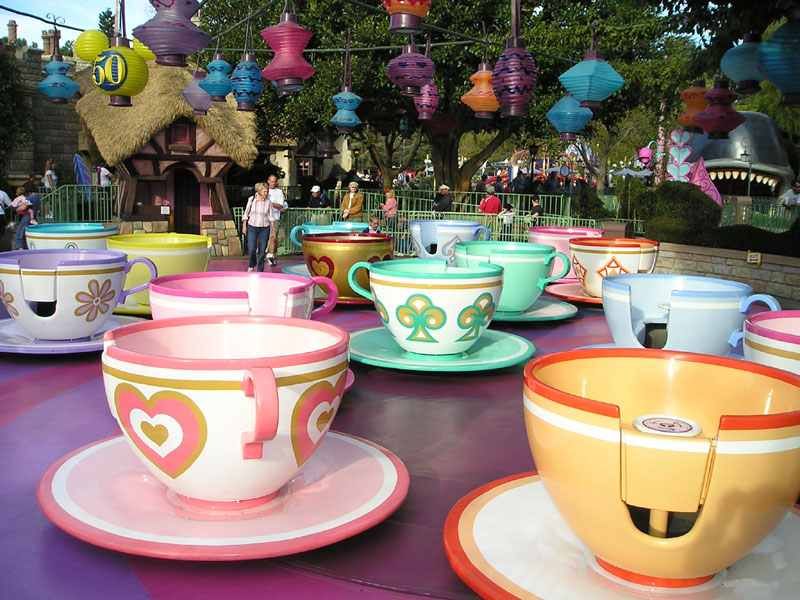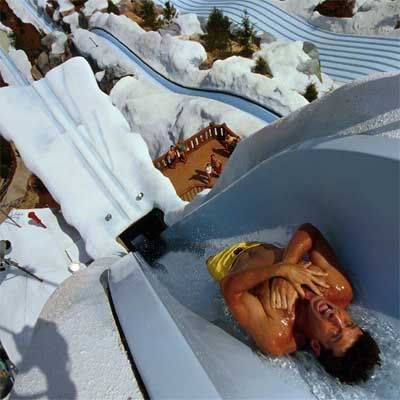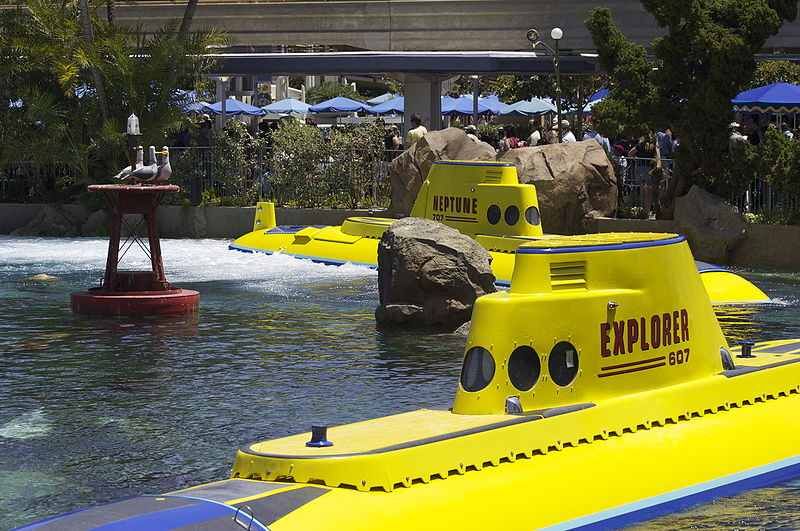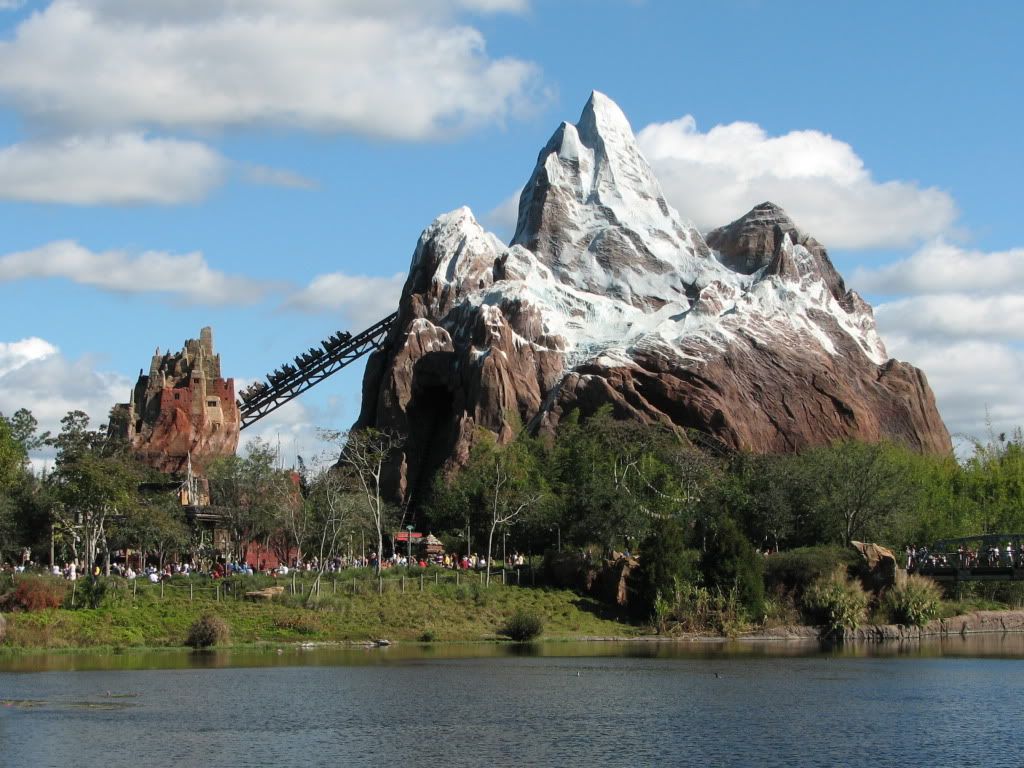
Asa's Invention: Asa hasn't built anything in this episode. Instead he greets us while bounding up and down (until he gets dizzy) on a mini-trampoline in his workspace.
Defined Terms: Energy, work, mechanical energy, kinetic energy, Law of Conservation of Energy
Disney Rides and Attractions that exemplify the theme:

The Tea cups are a fascinating example of work and energy because in order to get the full experience the riders have to provide some of the work themselves. Gears (mechanical energy) underneath the ride spin the entire platform and the three smaller discs. Riders do their own work on the spinning wheel in the center of the cup. We learn about the conservation of energy--all the enregy going into the ride must come out in some form. In this case some of the enregy is turned into heat energy through the friction of the brakes and gears.

Sumitt Plummet: It is a loonnngggg climb up the stairs to the top of the biggest straight water slide in the world, but once we've reached the top we learn that we've accumulated a lot of potential or stored energy. This is turned into kinetic energy as we swoosh down, going faster and faster. In theory, they could have constructed an uphill section of slide and we could have converted the kinectic back to potential energy. It would have to be slightly lower than the original drop because there was some loss of energy to friction. Instead the energy is disipated by the dispersal of water at the bottom of the slide and believe it or not some heat energy raising the temperature of the water. (FYI: Asa reached a speed of 51 mph on his descent).

Test Track This is the fasted ride in all of Disney World and it takes a lot of eletrical energy. A bar located beneath the car draws energy to the motor to drive the wheels, the display panel and the audio system. Heat energy comes from the friction of the brakes (most energy systems end with the creation of some heat). What you may not know is at the end of the ride the motor is actually switched to a generator function. As it creates electricity, it resists being turned and that slows the vehicle down. There is a similar system in Mission Space that actuall creates energy that goes back on the electric grid.
The Finding Nemo Submarines: Now we enter a phase about renewable and green energy. We see a glimpse of the solar panels on the Energy Pavillion in Epcot as well as the Disney Studios in California. Coal, natural gas, and oil are labeled "bad." Solar, wind, and bio-fuels are labels "good." The example given are the submarines in Disneyland. Originally they used diesel fuel but when the ride was refurbished to a Nemo theme the subs were converted to electricity. They are described as being cleaner but no on carries the system out far enough to realize that somewhere there is a power plant still burning coal in all likelyhood to create the electicity.

Expedition Everest: This coaster appears in several of the dvds. I suppose this is because it's the newest thrill ride and they are still promoting it. The coaster has the longest train of any roller coaster on Disney property. There are two lift hills on the ride to provide potential energy, but even then the imagineers needed to supplement the system. Just before both pauses in the ride, electric booster wheels carry the train higher on the track to create more potential energy for the thrills and spills ahead.

Quiz: 15 questions--either true/false or multiple choice
Try it Yourself: Asa guides us in building a Newton's Cradle. Perhaps you don't recognize the name but most people have seen them in school or as an executive desk toy. Someone will have to sacrifice 5 golf balls for the contraption. Other supples are push pins, fishing line, and tape. It's certainly do-able, even for youger kids although they may need help with alignment. Asa's cradle is built between two chairs so it's temporary in nature. I'm sure an enterprising homeschooler could figure out a permanent stand for the device.


1 comment:
♥ I'm starting with this one! We learn about energy in CC this year.
Post a Comment